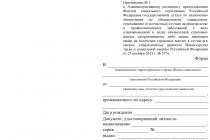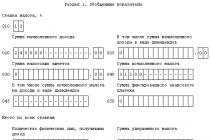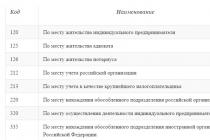Experts see no prerequisites for a serious devaluation Belarusian ruble.
In 2018 on foreign exchange market countries will undergo significant changes, but the authorities do not predict a significant adjustment in the exchange rate of the Belarusian ruble. In the budget for 2018, the Ministry of Finance laid the average annual rate of 2.0379 rubles per dollar. What will the course actually be? national currency in the coming year?
The foreign exchange market smelled of liberalization
Significant changes in the foreign exchange market of Belarus are planned for this year. in the main directions monetary policy, which the president signed a few hours before the New Year, it is said that in 2018 “actions National Bank will be sent for cancellation. mandatory sale foreign exchange earnings and target purchase foreign exchange in the domestic foreign exchange market.
This week, the National Bank has already published a decision to cancel the targeted purchase of foreign currency. Recall that for more than two decades, residents of Belarus (legal entities and individual entrepreneurs) had to use the foreign currency purchased on the domestic market within seven working days only for the purpose for which it was purchased.
Moreover, the list of purposes for which foreign currency can be bought was limited in Belarus. In particular, enterprises were allowed to buy foreign currency to fulfill obligations to non-residents, but they were not allowed to purchase foreign currency to place it on deposit.
Also in Belarus for the last decades another anachronism has been preserved - the mandatory sale of part of the foreign exchange earnings.
Using these administrative tools regulation of the foreign exchange market for many years was due to the fact that in Belarus until 2015 high devaluation expectations remained, and the refusal to purchase targeted foreign currency could significantly increase the demand for it, and the abolition of the mandatory sale could reduce its supply.
The influence of both these factors could weaken the Belarusian ruble exchange rate, so for decades the authorities held on to administrative mechanisms for regulating the foreign exchange market.
Creditors of Belarus insist on their cancellation. By the way, in the same Russia there is neither a mandatory sale nor a targeted purchase of foreign currency.
The willingness of the National Bank to abandon the mandatory sale and targeted purchase of foreign currency in 2018 suggests that now there is no need for these “crutches” to maintain the exchange rate of the Belarusian ruble.
“The targeted purchase of currency and its mandatory sale are the remnants of the old monetary policy that was carried out until 2014, when the ruble exchange rate was determined in an administrative way. Now we have a market-based exchange rate regime, so in these conditions there is no need to maintain the mandatory sale of currency or control over its purchase,”- Valery Polkhovsky, Senior Analyst of the forex broker Forex Club, said in a comment to BelaPAN.
National Bank emphasizes that currency liberalization will benefit businesses.
“The removal of restrictions on the targeted purchase of foreign currency ... will provide greater freedom entrepreneurial activity and will reduce the administrative costs of business entities associated with the need to apply to the National Bank for obtaining permits for the purchase of foreign currency for purposes other than provided by law, extending storage periods and changing intended use purchased foreign currency, the regulator said in a statement released this week.
Devaluation can not be afraid?
Under the current conditions, it is predicted financial analysts, the ongoing liberalization of the foreign exchange market will not have a significant impact on the ruble exchange rate.
“The liberalization of the foreign exchange market will not affect the dynamics of the Belarusian ruble exchange rate, since the situation today is fundamentally different than in 2014, when high devaluation expectations were observed in the country,”- says Valery Polkhovsky.
At the same time, he notes that the abolition of the targeted purchase and mandatory sale of foreign currency is evidence of the authorities' readiness to pursue a responsible monetary policy.
"Possibilities of using money issue to stimulate the economy will be almost completely eliminated”,- believes Valery Polkhovsky.
Given the increased world oil prices, the expert predicts, the exchange rate of the Belarusian ruble in 2018 may be relatively stable.
“Against the background of relatively high oil prices, the exchange rate Russian ruble may stabilize around 55-60 rubles per dollar, so in 2018 there should not be big fluctuations in the foreign exchange market of Belarus. By the end of the year, the dollar exchange rate may be approximately the same as it is now,”- says Valery Polkhovsky.
A similar opinion is shared by Belarusian bankers, who do not expect big shocks with the ruble exchange rate this year. In private conversations, bank employees note that their forecasts for this year do not imply significant adjustments. exchange rate.
Vadim Iosub, a senior analyst at the Alpari forex broker, also believes that nothing foreshadows a big devaluation yet.
“In recent years, the depreciation of the Belarusian ruble against a basket of foreign currencies has been comparable to changes in consumer prices. It is likely that this correlation will continue this year. There are no prerequisites for the devaluation of the ruble by tens of percent,”- says Vadim Iosub.
In his opinion, if the cross-rates of foreign currencies do not change significantly this year, then by the end of 2018 the rates will be approximately as follows: 2.15-2.20 rubles per dollar, 2.55-2.60 rubles per euro and 3.70-3.75 Belarusian rubles for 100 Russian rubles.
“At the same time, changes in cross-rates of foreign currencies on the world market can significantly affect the actual results that we will receive by the end of the year,” warns Vadim Iosub.
The expert draws attention to the fact that in 2017 the dollar exchange rate in Belarus remained practically unchanged, while the euro rose in price by more than 15%.
"Most likely, external factors will continue to have a decisive influence on the dynamics of the ruble exchange rate against foreign currencies in 2018”,- summed up the financial analyst.
In the conditions of an unstable economic situation in the world and a crisis that has been going on for several years in a row, the government of any European state needs to know for sure how the situation with the American currency may develop in the future. Indeed, today the dollar is considered the basis of the entire world economy, therefore, even a slight fluctuation, from a negative point of view, is reflected in the overall picture of GDP development. In light of such a problem, it is very important to figure out exactly what the dollar exchange rate will be like in 2018, Belarus. Well, it's time to consider the forecasts regarding the topic raised.
Basic information
Today, we can say with confidence that the parliament of the noted republic has begun to deal with the issue of establishing its own economy with all seriousness. After all, you should be fully armed in any situation in order to continue to stay afloat. To do this, you will have to study the statements on the topic raised by experts and analysts in Belarus, and the information of independent users of well-known world departments. In fact, they all agree on one thing - in 2018 one should not be afraid of the devaluation of the ruble.
By and large, to determine the approximate assessment of the course American currency for the near future, it is only necessary to operate with external conditions and indicators. 
Internal factors have a positive effect on the state of the world currency in the country. True, for a start it is worth understanding the very concept of “internal factors”, and then understanding what exactly their influence is. The most significant factor of external origin is the cost of oil. In fact, its current state is largely considered to be decisive for the economy of any power. For example, if during the year the cost of black gold consolidates at $35 per barrel, then in Belarus itself the exchange rate of this currency will be 2.21 local rubles. By the way, now the value of the dollar is 1.96 rubles.
Last news
According to Belarusian officials, their priority in the direction of the paramount political activity, the need for complete de-dollarization in the state is considered. A terrible word, to be honest, but its essence is simple: by the end of 2018, the American currency should be completely excluded from calculations, the formation of duties, rates, prices, and other payments. To achieve this goal, the parliament of the republic agrees to take the most radical measures. It is very important to take the first steps towards increasing the availability of ruble funds. To do this, however, care must be taken to significantly reduce interest rate for loans in local currency. It is this list of proposals and wishes that is spelled out in the program of socio-economic development of Belarus until the end of this decade. By the way, this resolution has already passed the process of approval by the President.
Why is it necessary to abandon the dollar?
Despite the chosen policy of the country's officials, ordinary citizens do not fully understand such a need. Why, in fact, is this very de-dollarization needed right now? It turns out that there are several reasons for such a decision?
1. Increase the possibility of increasing the availability of loans in the national currency - rubles. If we assume that the approved program will already begin to give the desired “fruits”, by the end of this year, loan rates will be 14-15%, while in 2019 they can drop to 9-11%. It should not be thought that such a process will take place very quickly. Not only is the fluctuation of lending rates very smooth, but we should not forget to take into account the calculation of inflation rates, which can reach the required minimum much faster. According to the forecasts of the National Bank, by 2020 the inflation rate will decrease by 5%, while the interest rates on loans will be several times higher than its mark. 
2. Changes in the foreign exchange market. By the end of this year, a gradual abolition of the sale of foreign exchange earnings to experts should be carried out, which is still considered a mandatory procedure. It is during this period that the need for targeted purchases of American currency will be completely abolished, so that by 2020 the government of the state will be able to remove any restrictions on the possibility of opening accounts in foreign banks.
3. Ensuring high dynamics of bank savings income. This trend directly depends on the reduction of lending rates. Analysts in the field of economics have found that the development financial market The Republic of Belarus is primarily focused on creating attractive conditions for investment cash savings. For the economy of the state, all this looks like in the following way- it is necessary to provide the declared area with more accessible sources of funding. At the same time, in order to achieve this goal, it will be necessary to pay attention to the creation of special investment funds, as well as a certain system used as the basis for building and housing savings. 
4. Formation and further development of the bond and stock market. A completely logical question immediately arises: will the instruments newly created by the state be profitable for the common people, while providing an acceptable level of profitability? There is no exact answer yet. That is why most experts are sure that in some 5 years Belarusians will be able to use only bank bonds and deposits as the most successful source of saving their own savings.
In conclusion, it remains only to add that even now the government of Belarus is doing everything in its power to stabilize the current situation in the country, which, by the way, was due to the jump of that same dollar. At the same time, it is necessary to take into account the facts, how exactly similar situation may affect the people of the republic, for the sake of which various steps are being considered. Therefore, it is almost impossible to say exactly what the dollar exchange rate will be in 2018 in this power. Time will tell.
Yesterday we received the fifth tranche of a $200 million loan from the Eurasian Fund for Stabilization and Development. This money, like the rest, should be spent on reforms Belarusian economy. How are they in our country? Are there any changes and what to fear in the future? Today, the Eurasian Development Bank, the fund manager, summed up the interim results.
What should we do in return for a loan?
It is clear that loans to Belarus are issued for a reason. In return, responses are always needed. The global task is to achieve stability and sustainable growth of the Belarusian economy. In particular, the EDB demanded a tight monetary policy, no directed lending, exchange rate flexibility, restrained growth in wage costs, the abolition of cross-subsidization, 100% utility bills, and so on.
In addition, in the latest requirements, the bank called the solution of issues with excessive employment, the provision of retraining opportunities, an increase in unemployment benefits, and the reduction of the public sector.
What are the results so far?
Course stabilization
According to EDB estimates, the refinancing rate was falling quite quickly: in two recent years it decreased from 25% to 11%. This has led to an increase money supply on the market. True, against this background, directed lending was reduced and a tough fiscal policy. In addition, favorable external factors also affected Belarus: an improvement in the economic situation in Russia, an increase in demand for non-commodity exports, an inflow of foreign currency due to significant external borrowings and net sales of foreign currency by the population - all this strengthened payment balance and stabilized the exchange rate.

Reducing inflation
- As of June 1, 2017, inflation was 6.1% year-on-year compared to 12.4% on June 1, 2016, the bank says. - It should be noted that such success of the authorities in the fight against inflation was achieved against the backdrop of the liberalization of prices for consumer goods. The share of regulated goods and services in the consumer price index basket fell to 20% - against 33% since the start of the program. According to the EDB, the level of payback of housing and communal services for the population has also increased. From 51.6% to an estimated 62%.

- In September of this year, the average inflation fell to 6.4% against the background of average inflation in 2010-2015 at the level of 28.4%, while inflation for 12 months decreased to 4.9%,- concludes the bank.
Switching off the printing press
The annual growth of broad money as of June 1, 2016 was 16.9%, and as of June 1, 2017 - 4.5%, compared with an average growth rate of 43% per year during 2010-2015.

Budget surplus
Over the past two years, we have experienced an increase in capital expenditures, replenishment of the authorized funds of enterprises and an increase in the Fund's loan support social protection population. The increase in the surplus was due to the accelerated growth of budget revenues. Mainly due to the recovery of imports in the EAEU and an increase in excise rates, as well as a relatively restrained current spending policy.

The authorities of the Republic of Belarus continued to adhere to strict fiscal policy. According to the results of January - May 2017, a wide budget surplus of the bodies government controlled, which takes into account government off-balance sheet spending, increased to 2.7% of GDP compared to 2.0% of GDP in January-May 2016.
Growth in non-energy exports
The depreciation of the ruble by 7.5% in real terms in January-May 2017 (producer price index) in the context of a flexible exchange rate policy and some growth economic activity in Russia contributed to the increase in Belarusian non-energy exports - the main driver of the country's economic recovery. According to the results of January - May, GDP growth amounted to 0.9%.

Continued growth in exports, as well as the emerging recovery domestic demand accelerated economic growth to 1.7% in the first 9 months of 2017.
But what threatens?
- Despite a significant improvement in the macroeconomic situation, the rapid pace of monetary policy easing carries serious risks of accelerating inflation, which may appear as early as early 2018, explains EDB. - The rapid and significant reduction in the refinancing rate in January-October 2017 from 18% to 11% resulted in the acceleration of broad money growth in the second half of 2017. In addition, the reduction in inflation rates was achieved against the backdrop of a stable exchange rate of the national currency, which was supported external borrowing country and net sales of foreign currency by the population.

The bank also warns that Belarus has almost reached the threshold for external debt. Meanwhile, the net sale by the population of currency accumulated outside banks in previous years cannot be a stable source of replenishment of reserves.
- These factors of supporting the balance of payments and stabilizing the exchange rate cannot be called sustainable,- considers the EDB. - Structural problems, including the presence of excess employment in state enterprises and conservation problems of inefficient enterprises, limit the potential of monetary policy to further reduce inflation. And the recovery of real incomes of the population and the easing of monetary policy in the context of persistently high inflationary expectations increase the risks of inflation accelerating in the short term.

- Insufficient progress in the implementation of market-based structural reforms increases the risks of deterioration of the country's external position in medium term. AT current year there is a significant excess of growth rates of physical volumes of imports over exports,- concluded in the EDB. According to them, fundamental imbalances in the economy still persist in Belarus. This is evidenced by a steady reduction in the inflow of direct foreign investment and an increase in the share of borrowing in financing the account deficit current operations. All of this is happening at a slow pace. economic growth and the high cost of external borrowing.
Due to the expected growth wages and the boom in the market consumer lending, in 2018 the US dollar against the Belarusian ruble may grow by more than 10%.
Only two weeks before the end of 2017, it finally became known how the government of the Republic of Belarus is going to fulfill the President's order to increase the average wage in the country to 1,000 BYN, and whether it is going to do it at all. This happened on December 18, when in the House of Representatives of the National Assembly of the Republic of Belarus, officials presented a bill on the republican budget for 2018, amendments to Budget code and the draft law on the state budget off-budget fund social protection of the population for 2018.
Officials do not want to raise salaries, but they will
As it turned out, the officials nevertheless decided to risk their seats, and when forming republican budget they included in it an increase in the average annual salary not up to 1 thousand BYN, but only up to 921-941 BYN. True, the draft budget is calculated based on a conservative, that is, the worst scenario for the development of the economy of the Republic of Belarus, so there is a high probability that things will go better, the budget will receive more revenue, which officials will apparently promise the president to use to increase salaries.
At the same time, the government seems to have decided to demonstrate to the president that it has done everything it could to raise wages: almost all the expected increase in budget revenues (according to the conservative scenario) is supposed to be directed to increasing wages in public sector. wage fund in consolidated budget in general, it should increase by 1.2 billion BYN in 2018 compared to 2017. This should ensure an increase in the average monthly salary in the public sector to 700 BYN from 615 BYN, which is expected this year. That is, the salary of state employees will increase by only 14%.
Will be increased in 2018 and: by 12%. Social payments will also increase. Compared to 2017, payments for these purposes will also increase by about 1.2 billion BYN.
Moreover, about 3 times (up to 1.2 billion BYN) reserve fund President, the funds from which can also be used to increase salaries, but by order of the President. Either the officials want to shift the responsibility for wage growth onto the president, or the president himself wants to directly manage the increase in wages and budget expenditures.
Thus, the salaries of state employees in 2018 will be significantly increased, although, perhaps, not to the extent required to reach 1,000 BYN in the country as a whole.
As for non-budgetary enterprises, the situation is more complicated. Officials cannot order to raise wages there, but they are quite able to threaten the management of enterprises, which is happening in some places. Thus, the administration of the Tsentralny district of Minsk sent letters to enterprises located on the territory of the district, in which it was said that the management of the enterprises also bears personal responsibility for the plan to increase wages. It turned out that the plan for the Central District in December was 1,499.3 BYN. The letter also said that for this it is possible to shift the payment of remuneration to December, that is, the executive committee hinted at how the president's order could be carried out.
It is difficult to say what effect such letters will have, but it is clear that there will be some result. Therefore, perhaps, there is no doubt that in December 2017 the salary will jump to 1 thousand BYN. There is also no doubt that in January 2018 it will fall sharply. Something similar happened at the end of last year, when there were no demands from the president yet. Many enterprises have paid annual bonuses to their employees, resulting in average salary in the country increased by 84 BYN (11.7%) compared to November and reached 801.6 BYN. And in January 2017, it fell by 10.1% and amounted to 720.7 BYN.
In October 2017, the average salary in the Republic of Belarus amounted to 841 BYN, that is, it is necessary to ensure an increase of 159 BYN, which is almost 2 times higher than the increase in December last year. But given the administrative resource and the increase in salaries in the public sector, this does not seem impossible.
It is important that, unlike the events of a year ago, at the beginning of 2018, salaries will not return to almost the same level. There will be directors of enterprises who will actually raise salaries, and in the public sector, its increase, in fact, has already taken place. In this regard, the situation on the foreign exchange market of Belarus will seriously change.
There will be a shortage of foreign currency in the domestic market of the Republic of Belarus
The expected effect can be approximately estimated by the amount of "extra" funds that will be in the hands of the population. As for the public sector, this value is known - 1.2 billion BYN. Another 1.2 billion BYN will be added by pensioners and social payments. The increase in wages in the non-budgetary sector can be estimated by the ratio of the number of employees in it to the number of state employees. We have about 850 thousand of the latter, therefore, about 4.2 times the number of employees in the non-budgetary sphere more people(assuming that we officially employ 4.5 million people).
If we assume that the directors of enterprises increase the salaries of employees to the same extent as in the public sector, then this will lead to an increase in the income of the population for the year by about 5 billion BYN (by 14% - as for state employees). Together with state employees and pensioners, this will give approximately 7.4 billion BYN. The incomes of students and officially non-working individuals will also grow, but we will not take them into account.
Of course, a significant part of these funds will be neutralized by inflation, which is expected to reach 7% in 2018. That is, about half of the increase in the income of the population can be related. Approximately 3.7 billion BYN will remain.
Where will they go? Most likely, for the purchase of goods and foreign currency, since the rates on deposits, both in rubles and in foreign currency, make savings in banks unattractive. It is difficult to say in what proportion the funds will be divided, but given the low standard of living of the majority of Belarusians, one can expect an increase in demand for goods. And this will inevitably lead to an increase in imports, that is, to an increase in demand for foreign currency from enterprises. It is also difficult to say in what proportion the demand for goods is transformed into an increase in imports, but it is clear that it is significant, given the high share of imported goods in the domestic market of the Republic of Belarus, as well as a significant share of imported raw materials and energy carriers in the cost of goods produced in Belarus. If we approximately assume that each ruble will lead to an increase in imports by 50 kopecks, then it turns out that imports will increase by about 1.85 billion BYN, that is, in dollar terms, by about 0.9 billion USD.
But it should be borne in mind that we have another factor that will stimulate imports: a boom in the lending market, primarily consumer. As calculated in , this will lead to additional demand for the currency in the amount of about 0.6 billion USD (at least).
In total, this will ensure the emergence of additional demand for the currency in the amount of about 1.5 billion USD, which is likely to be slightly less than the net sale of foreign currency by the population this year. For 11 months, this is 1.8 billion USD, but in November net sales decreased to 64.9 million BYN, and in December they may become negative.
In principle, this is not yet a disaster, since until recently international trade The Republic of Belarus was approximately balanced, that is, the net supply of currency from the population was bought out commercial banks with the National Bank, paying off their foreign currency debts. That is, the excess of foreign currency this year did not put much pressure on the Belarusian ruble exchange rate, so the disappearance of this excess will not lead to the collapse of the ruble exchange rate.
But do not forget that in the above calculations, we focused on the minimum increase in wages, that is, its growth in reality may well turn out to be significantly higher, and additional demand for the currency will rise to 2 billion USD or even higher. In addition, enterprises and banks are well aware of the risks involved, so they will also want to save their savings by converting rubles into foreign currency.
Thus, in 2018 Belarus is very likely to experience a shortage of foreign currency in the domestic market, which will lead to an increase in demand for foreign currency from the population and enterprises and an even greater increase in the deficit. The population may well turn from a net seller of currency into its net buyer, as it was before 2016. And this is serious.
If the inhabitants of the country start buying currencies at least as much as they sell, there will be a currency deficit in the amount of about 1.5-2 billion USD per year. And it will have to be compensated by reducing the volume of imports, which, following the above logic of the ratio of wage growth and imports, requires an increase in the dollar against the Belarusian ruble by about 10%. It is possible to increase by a large amount, although in this case, after the rapid growth of wages ceases, the exchange rate may decrease.
The above calculations are of a very approximate nature, but they allow us to assess the scale of the existing risks in the country's foreign exchange market associated with the planned increase in wages. There is no alternative to the weakening of the ruble, unless, of course, the Council of Ministers and the National Bank come up with ways to tie up the funds of the population. But this is something hard to believe.
Belarus has an impact on the dollar exchange rate forecast in 2018. Expert opinions differ on this issue. We can say with confidence that the situation with the US currency in the country will be stable only for 3-4 months, but it is almost impossible to predict what will happen after 6 months.
Be that as it may, experts say that as of January 1, 2018, the value of the dollar in rubles will be no more than 70 units, but this factor directly depends on how the price of oil and other fuel products will change. Today, you will give away as much as $55/barrel. This price may remain for the next few months, according to experts.
 French experts believe that the fall of the ruble and the decline in oil prices over the coming year will not happen, but the undermining of the economy, and, accordingly, the change in the cost dollar currency possibly due to the following circumstances:
French experts believe that the fall of the ruble and the decline in oil prices over the coming year will not happen, but the undermining of the economy, and, accordingly, the change in the cost dollar currency possibly due to the following circumstances:
- The construction of large architectural structures that will bring great opportunities to the country;
- The beginning of hostilities between especially large and leading states, as well as their entry into a conspiracy against other states;
- It is possible to change the current forecast in the event of some cataclysms (especially large floods, storms or earthquakes) that will incur big number victims and victims;
- The establishment of additional sanctions against the state, this will aggravate the situation, thereby causing too sharp a rise in prices within the state, and the impossibility of supplying personal products abroad.
However, one of the Parisian experts, Pierre Terzyan, argues that over the next five years the situation in the country will practically not change and there is no need to worry too much about the increase in the value of the dollar. Of course, the opinions of economic prophets can be trusted only in the case when force majeure circumstances are not imminent.
Other influences on the dollar
Particularly accurate predictions and forecasts for the change in the value of the dollar against the Belarusian ruble are problematic. Not only the problems listed above, but also foreign policy relations, such as the coming to power of Donald Trump, can greatly affect the state of the American currency. It is predicted that this event will significantly change the situation in each state, but whether the leaders of the leading countries will be able to agree among themselves.
 It is equally important to prevent terrorist attacks in every possible way, that is, to establish an obstacle to suicide bombers on the territory of the countries of Russia, Belarus and the United States. Such manipulations will cut a lot of expenses, which will allow to boost the economy of the states, and this will change the so expensive value of the dollar. Depositors are warned by experts that it is better to invest and store currency in dollars for a short-term period, because it is not known how the economic situation within the country will turn out. There is a high probability that next year investors may lose their savings.
It is equally important to prevent terrorist attacks in every possible way, that is, to establish an obstacle to suicide bombers on the territory of the countries of Russia, Belarus and the United States. Such manipulations will cut a lot of expenses, which will allow to boost the economy of the states, and this will change the so expensive value of the dollar. Depositors are warned by experts that it is better to invest and store currency in dollars for a short-term period, because it is not known how the economic situation within the country will turn out. There is a high probability that next year investors may lose their savings.














